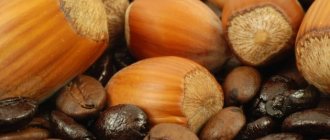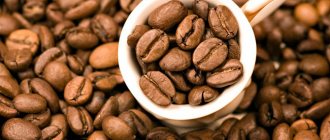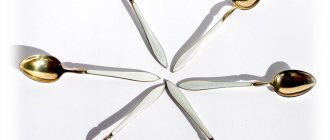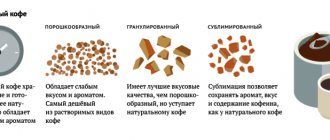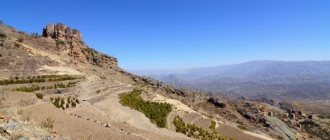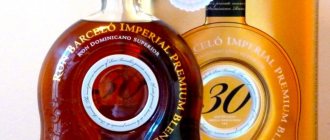Cuba is famous not only for rum and cigars, but also for delicious coffee. Cuban coffee is produced much less than Colombian and Brazilian coffee. The drink is popular due to its taste. True coffee lovers prefer it. It is distinguished by its strong strength and rich aroma, invigorates and energizes. Therefore, Cuban coffee is valued all over the world.
How the drink came about
Coffee beans were first imported from Haiti in the eighteenth century. At that time, serious tree care was organized and strict control over product output was carried out. Thanks to the creation of ideal conditions and a warm, humid climate, the bushes began to produce a large harvest of grains.
Over time, the volume of coffee plantations grew and in the nineteenth century, Cuba occupied a leading position in the export of this product. The Cuban drink has a pronounced rich taste, slight sourness, and contains chocolate and tobacco notes.
Granma, Holguin and Guantanama
The following varieties are also very popular: Granma, Holguin and Guantanama. They grow on plantations in the Sierra Maestro mountain range and are all very similar to each other. They were named after the city and province in which they grow. They are characterized by a sharp, burning taste without a hint of sourness. They are also valued for their very dense, thick aroma, which contains notes of tobacco. The caffeine content in them is quite high, which makes the drink strong and invigorating.
Cuban coffee Cubita (Cubita)
Today, Cuba supplies the coffee market with dozens of varieties of Arabica beans. The drink is called Qubita, which has many different varieties. The best are considered:
Altura
Popular not only among local residents, but also outside the country. Cubans value it for its high caffeine content and rich aroma. The finished drink is quite thick and has some bitterness and astringency in its taste.
Maragogyp
One of the best Cuban varieties. Refers to high quality drinks. Brewed coffee has a strong aroma and thick consistency. The invigorating drink has a burning aftertaste, which adds originality to it.
Guantanamo
The famous Arabica variety grows in the Sierra Maestro mountain region in the city of Guantanamera. Similar varieties are Granma and Holguin, which are named after the places where they are grown. These varieties lack sourness. The prepared coffee has the aroma of tobacco and has a burning tart taste. Cubans value these varieties for their strong strength, which is expressed in the drink, which is achieved due to the high caffeine content.
What cigars to bring from Cuba
Let's start the list of souvenirs from Cuba with real cigars made in the best local tobacco factories.
- Bolivar - strong cigars of different thicknesses - from cigarillos to classic sizes
- Romeo y Julieta is the most popular brand in the world. The Churchills variety was produced specifically for the legendary British Prime Minister Winston Churchill and named after the famous world political leader
- Trinidad - long and thin cigars of a special shape, made by hand and have a rich taste, will appeal to connoisseurs of exotic varieties of tobacco with a hint of chocolate
- Cohiba is an elite variety, produced since 1968 and was previously available only to the privileged classes of society. Medium strength cigars, tobacco has a rich oak aroma, aged in barrels at a certain temperature
When buying cigars from Cuba as a gift, be sure to take a guillotine - a special device for cutting. There are inexpensive options made of metal on a plastic stand and luxurious ones with a gold blade. In addition, purchase an ashtray, a stylish lighter and a humidor - a storage chest.
The cost of a set of accessories for storing cigars starts at $100, and the price per piece ranges from $4 to $20, depending on the variety and manufacturer. Please note that you can bring no more than 50 cigars as a gift from Cuba.
How to brew real Cuban coffee
Now you can find many different recipes for making the drink. But, following the basic rules, it should be: very hot, very sweet and strong. Cubans prepare it according to the principle of “more coffee, less water.” The caffeinated Cuban invigorating drink is quite thick. For this recipe, only grains that grow on Cuban plantations are used.
In order to brew real Cuban coffee, you must follow some rules:
- Grains must be ground before cooking;
- The drink will turn out very tasty and aromatic if you brew it in a geyser coffee maker (the beans are prepared under high steam pressure);
- To reveal all the qualities of coffee, it is better to add cane sugar;
- The beans should not be freshly roasted;
- You need to brew the drink with a good positive attitude.
Cuban coffee recipe
If you don’t have a geyser coffee maker, brew the drink in a Turk. You will need the following ingredients:
- Two teaspoons of coffee beans;
- Two hundred milliliters of water.
- A tablespoon of cane sugar;
- Rum to taste.
Grind the grains before starting cooking. Mix coffee and sugar in a pot, pour in water and bring to a boil on the stove. It is better to cook over low heat; when the mixture begins to boil, remove the Turk from the stove. Wait a few minutes for the grains to settle. Now you can add rum as desired or replace it with cognac, which will affect the taste of the coffee. The real drink in Cuba is prepared with rum, served in small cups and drunk very hot.
Story
The first coffee plantation in Cuba was founded in 1748 by a man named José Antonio Gelabert. By 1791, the country was flooded with French emigrants, who brought with them more modern methods of coffee production and occupied the southeastern provinces of Santiago, Guantanamo, and Holguin for plantations. Up until the start of Castro's reign, the coffee industry flourished. Cuban coffee was of high quality and was prized on the international market. Most of the products were exported to Europe, mainly to the Netherlands, Spain and Germany.
The coffee industry played such a significant role in the development of the country that Cuba's first coffee plantations are included in the UNESCO World Heritage List.
Beginning in the 1960s, coffee production in Cuba declined due to the dissolution of large-scale production and a lack of motivation for small farmers. It got to the point that until 2005, coffee in Cuba was mixed with roasted chicory or chickpeas. Then this “tradition” was abandoned, but in 2011 they were forced to return again, since otherwise the domestic market would have been left without an invigorating drink (the highest quality products are exported).
In 1962, the United States imposed an embargo on all Cuban goods, including coffee. The USSR remained the main market for a long time, but in 1991 it collapsed, leaving the island without a main importer. If in 1990 Cuba produced 440 thousand bags of aromatic grains, then in 2008 this figure dropped to 7 thousand. In 1996, America lifted the embargo. Now, thanks to government investments, the use of modern equipment and increased coffee prices, the production level has reached 100-130 thousand bags per year.
Cuban green coffee
The first coffee plantations appeared in Cuba. But now it is almost impossible to purchase due to the introduction of American sanctions. There are several reasons why green coffee is very difficult to find:
- Very small volumes of products. Despite this, local authorities want to resume production processes;
- Due to the imposition of sanctions by America, many countries have lost economic ties with Cuba;
- Only Russia and China are considered the main consumers of Cuban coffee.
Arabica grows in Cuba, and its quality is no worse than that of other world producers. It does not have a strong sourness, like American varieties. Now not everyone can afford to drink a real and high-quality Cuban drink.
Production Features
Cuban coffee varieties include both Arabica and Robusta. In 2003, the country began exporting certified organic coffee to Japan and Europe.
From 1961 to 2021, the total area of plantations has decreased from 170 to 28 hectares. Main production regions: Sierra Maestro Mountains, Escambray Mountains, Nipe and Sagua-Baracoa Mountains, Guaniguanico.
Cubans receive monthly coffee vouchers at the rate of 4 ounces (approximately 115 grams) per person.
Price
The drink has an affordable price for everyone. A package weighing one kilogram can be bought for one and a half thousand rubles. The price of fresh harvest may be higher.
Fans of this amazing drink will be pleased with its quality. Cuban coffee varieties are considered one of the best. Trying it for the first time, many remain fans for life. Tourists always bring cigars, Cuban rum and, of course, coffee from Cuba. Cuba supplies coffee blends to the world market, so you can try it in its pure form only within the country.
Coffee-growing regions of Cuba
One important coffee growing region in Cuba is located in eastern Cuba in the Sierra Maestra Mountains.
The climate is favorable, and the fertile reddish-brown soil, rich in humus, allows coffee to be grown without the use of chemical fertilizers, giving Cuba a reputation for being a conscientious producer of some of the best varieties of coffee.
The Sierra Maestra has a long history of hand growing and harvesting coffee beans.
Many of Cuba's coffee trees grow on steep slopes, and the coffee cherries are carried out of the zone in bags on the shoulders of farmers and then transported by mule to the drying areas. The traditional method of making coffee among mountain people is to roast the coffee beans and then grind them in a wooden "pylon" (mortar). The coffee is then immersed in hot water and the coffee grounds are strained using a cloth filter.
The other main coffee growing region in Cuba is the Escambray Mountains in central Cuba.
In the west, coffee is grown in Guaniguanico, and in the east in the Nipe and Sagua Baracoa mountains.
coffee bean
A gourmet's delight
But for those lovers of aromatic, strong drinks who never tire of looking for new unusual tastes, Cuban coffee can be a real find. Some varieties have such an unusual taste for European consumers that they are not particularly popular among this group of buyers.
If you want to feel like a real Cuban, Maragogipe and Guantanamera varieties are for you. Maragogyp is a kind of classic, a drink made from whole grains. It is very strong, bitter and tart. Cuban Guantanamera coffee has a slightly less pungent taste, is not overly astringent, but leaves a slight aftertaste of tobacco.
What is the secret of extraordinary taste?
In addition to historical and climatic features, several other special factors influence the depth and taste of the rich Cuban drink:
- Each tree on Cuban plantations is provided with careful care. This approach allows you to get the maximum benefit from the soil and fertilizers for each harvest.
- The grains are extracted from the peel and pulp using a special technology, which minimizes damage.
- All grains undergo the most careful selection. They are sorted both by the number of defects (cracks, chips) and by size.
- Cuban roasting is recognized as the strongest. The grains are fried at a temperature of 250 degrees, and this adds its own notes to the taste of the finished drink.
- Real coffee from Cuba is stored in special vacuum packaging, but even then the shelf life of the beans is short.
To feel all the features of a drink with such an interesting history and production technology, you need to buy Cuban coffee beans at least once. Reviews from connoisseurs indicate that only in this form can all the qualities of the drink be preserved as much as possible.
Distinctive features of Cuban coffee addiction
What are the features of Cuban coffee and how does it differ from its counterparts from Italy and France? When planning to try this extraordinary drink, you need to know the following:
- For its preparation, only natural, extremely roasted grains grown exclusively in Cuba are used;
- the finished drink is very strong, traditionally drunk with a lot of sugar;
- Cuban coffee is served in small cups and washed down with cold water.
This drink has a tart, spicy taste and obligatory notes of bitterness due to the high caffeine content. Of course, to complete the feeling of merging with Cuba, you can complement the strong taste of coffee with a tart aromatic cigar, but this pleasure is not for everyone.


